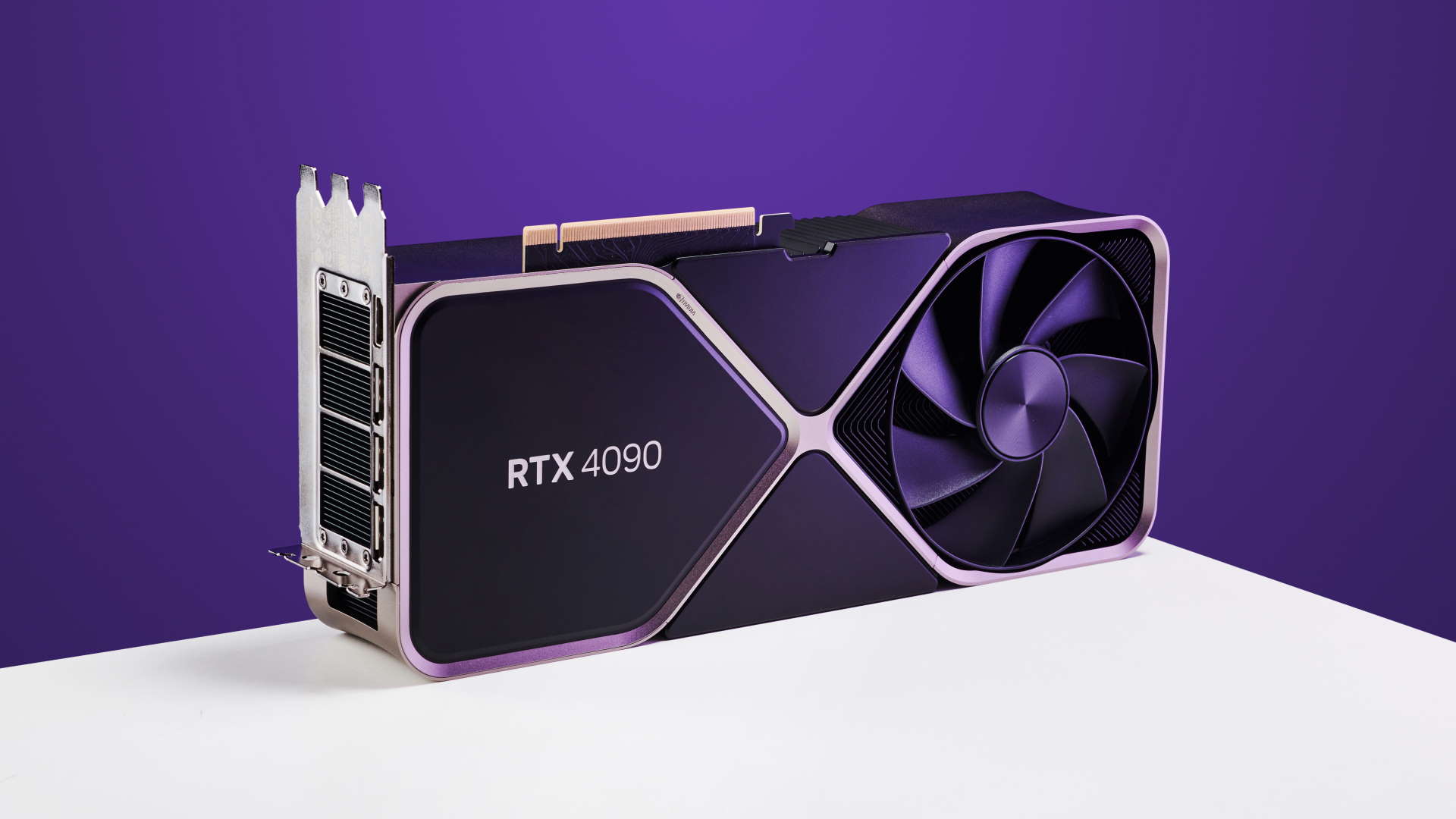PC gamers in China to get new RTX 4090 cards after all, just not the versions they might have hoped for
Like Nvidia was ever going to not sell one of its most profitable gaming cards in a market that big.

Back in October, the US Department of Commerce introduced a number of export restrictions for a variety of Nvidia's products to countries such as China, Saudi Arabia, United Arab Emirates, and Vietnam. It was mostly the AI monster chips that took the brunt of the ban but the GeForce RTX 4090 was also included, which invariably resulted in RTX 4090 price increases and hoarding of the top Ada graphics card. However, it now looks like Nvidia will be releasing an RTX 4090 D, specifically for China, that will be exempt from the restriction.
As first reported by Wccftech, the new version of Nvidia's gargantuan gaming card will use a modified AD102 GPU, one that has a lower peak compute performance. How much lower? Well, that's not clear at the moment, but I can take an educated guess at what it might be like.
To determine whether a consumer GPU is exempt or not, two metrics are used: Total processing performance (TPP) and performance density (TD). For all of AMD, Intel, and Nvidia's general GPUs, the former has to come under a limit of 4,800 for every possible density value.
The TPP is calculated by doubling the highest compute throughput that GPU offers, regardless of data format, and then multiplying it by the bit size of the format used. Unique features such as sparse tensor structures get skipped altogether. For the RTX 4090, the highest TPP involving tensors is 10,570 whereas for non-tensor stuff the figure is 5,286. Whichever one you go with, it's clearly over the limit.
That means the new RTX 4090 D will only need to have 10% fewer shader cores for the second figure to come under the limit and that wouldn't really have too much of an impact on the gaming chops of the card. But if the ban is based on the first value of 10,570 then some serious software shenanigans would be required, and it would all revolve around limiting the peak throughput of the tensor cores.
If that's the case, then it might actually impact how well DLSS works, as the underlying algorithm involves the use of tensor operations to do the AI image cleanup, right after the upscaling has taken place.

Best CPU for gaming: The top chips from Intel and AMD.
Best gaming motherboard: The right boards.
Best graphics card: Your perfect pixel-pusher awaits.
Best SSD for gaming: Get into the game ahead of the rest.
Although I don't know exactly which tensor routines take place (other than it will involve GEMMs), I strongly suspect that Nvidia will have to tweak the drivers and/or DLSS files to ensure the RTX 4090 D can never be used in a full-power tensor mode.
Keep up to date with the most important stories and the best deals, as picked by the PC Gamer team.
Well, perhaps. I guess it comes down to just how much scrutiny Nvidia's products undergo before they get approved for export. Whatever this new RTX 4090 variant is like, PC gamers in China may well be relieved to learn that they'll be able to purchase the most powerful gaming GPU around, even if it's not quite the one they'd really like.
If I was in the same position, I certainly wouldn't be paying some scalper a ridiculous amount of money just for an original model.
Oh, and if you're wondering what the D stands for, it's probably the same idea that AMD used with its China-only Radeon RX 7900 GRE. That stood for Golden Rabbit Edition, as 2023 is the year of the rabbit. Next year, it will be the year of the dragon. Simple, yes?

Nick, gaming, and computers all first met in the early 1980s. After leaving university, he became a physics and IT teacher and started writing about tech in the late 1990s. That resulted in him working with MadOnion to write the help files for 3DMark and PCMark. After a short stint working at Beyond3D.com, Nick joined Futuremark (MadOnion rebranded) full-time, as editor-in-chief for its PC gaming section, YouGamers. After the site shutdown, he became an engineering and computing lecturer for many years, but missed the writing bug. Cue four years at TechSpot.com covering everything and anything to do with tech and PCs. He freely admits to being far too obsessed with GPUs and open-world grindy RPGs, but who isn't these days?

